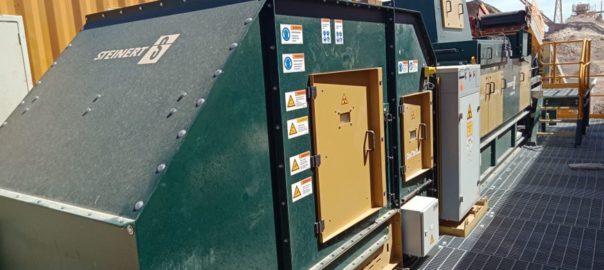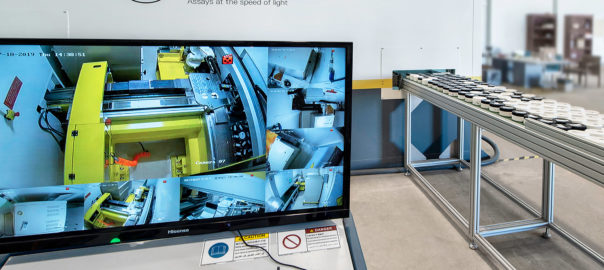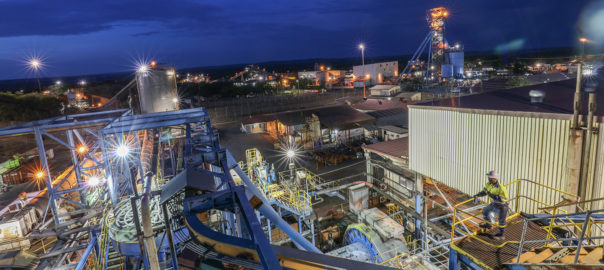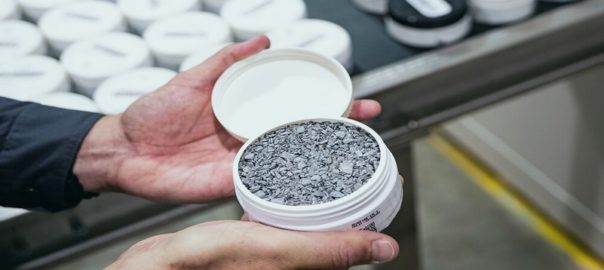Novo Resources Corp has advised that Phase 2 mechanical sorter trials using a Steinert KSS 100F LIXT fine mechanical sorting unit have commenced at the Nullagine gold project, in Western Australia.
Over recent weeks, the sorter infrastructure has been mobilised, constructed and commissioned adjacent to the company’s Golden Eagle processing plant at Nullagine. Fifty samples from the company’s Comet Well, Purdy’s Reward, Egina, and Talga Talga projects ranging in size from 800 kg to around 5 t have been delivered to the site for crushing and screening ahead of Phase 2 sorter test work.
The test work program in late 2021 and early 2022 is designed to achieve multiple objectives:
- Construct and commission the sorter and associated infrastructure (Phase 1 – complete);
- Tune the sorter to the various geological regimes and size fractions and train Novo operators in its use;
- Process samples from multiple Novo projects around the Pilbara to field test mass pull to concentrate;
- Establish assay protocols for sorter concentrate ‘accepts’ and waste ‘rejects’. Smaller concentrate mass will be processed by Chrysos PhotonAssay technology at Intertek’s laboratory in Perth, Western Australia. The Acacia reactor and electrowinning apparatus in the gold room at the Nullagine is being commissioned to accept larger masses of material from accepts and reject samples. This will be particularly important as the test work program moves to Phase 3 at the company’s Comet Well project in 2022 to test bulk samples (up to 20,000 t of potentially mineralised material from the Comet Well and Purdy’s Reward projects).
The sorter infrastructure, designed and constructed by OPS Screening and Crushing Equipment, is a fully modular and containerised turnkey plant deployable to any of Novo’s tenements in the future for test work and potential large bulk sampling and processing, the company said. The sorter includes feed and product transfer conveyors, allowing the sorter to produce gold-bearing concentrates in a single pass for further upgrading or downstream processing.
“This Phase 2 trial of the sorter within the Golden Eagle processing facility area is the culmination of several years of test work conducted by Novo to determine the amenability of mechanical sorting to its 13,250 sq.km of tenements across Western Australia,” the company said. “Mechanical sensor-based sorting utilises X-ray technology, 3D colour laser and metal induction to identify gold-bearing material. A high-pressure air jet ‘shoots’ these gold bearing particles into a collection system to produce a concentrate for further downstream processing.”
Next steps at the project include:
- Phase 2 completion prior to May 2022 – complete processing and assaying of all outstanding coarse, mid and fines samples from the company’s Comet Well, Purdy’s Reward, Egina and Talga Talga projects and establish operating protocols for processing larger mass; and
- Phase 3 commencing May 2022 (subject to approval from the Western Australian Department of Water and Environmental Regulation) – relocate the sorter and infrastructure to the Comet Well project for bulk test work.
Rob Humphryson, CEO and a Director of Novo, said: “Novo is delighted to see the sorter in operation at the Nullagine gold project. This represents the culmination of considerable planning involving a dedicated consortium of mechanical, electrical, geological and processing experts aiming to maximise the likelihood of success of an innovative application for sorting in the gold industry.
“Results from Phase 3 bulk sampling program set to commence in 2022 at the Comet Well and Purdy’s Reward projects, together with the results of the Phase 2 trials at the Nullagine gold project this year, are expected to provide sufficient geological and operating certainty to enable Novo to progress towards commercial operations at Novo’s nuggety gold deposits.”










